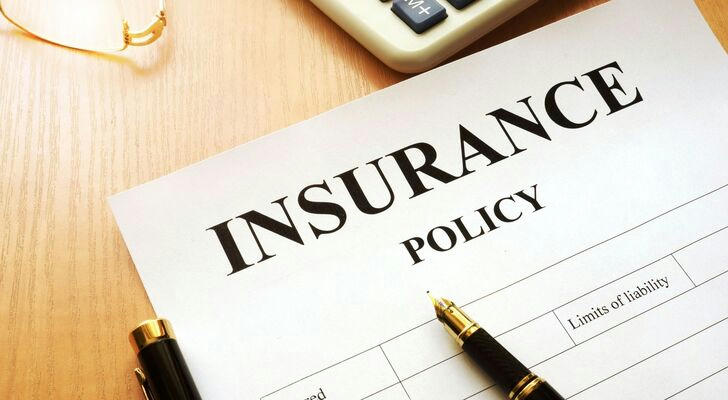Accident Insurance vs. Life Insurance: Know the Key Differences
When it comes to protecting yourself and your loved ones, insurance is essential. But with so many options available, it’s easy to get overwhelmed. Two common types of insurance that often cause confusion are accident insurance and life insurance. While both offer financial protection, they serve very different purposes.

1. What’s covered?
Accident Insurance: A Safety Net for Unexpected Events
Accident insurance is designed to cover the costs associated with unexpected injuries. Think of it as a financial cushion for those “bad” moments—like slipping on ice, breaking a bone, or needing stitches after a kitchen accident. It typically covers the following:
• Medical Expenses: Hospital stays, surgeries, and emergency room visits.
• Follow-up Care: Physical therapy or rehabilitation.
• Additional Expenses: Transportation to a medical facility or lodging for your family.
According to a 2024 report from the National Safety Council, the average cost of a non-fatal injury in the U.S. is $42,000, including medical bills and lost wages. Accident insurance can help offset these costs, especially if your health insurance has high deductibles or co-payments.
Life Insurance: The Long-Term Safety Net
Life insurance, on the other hand, is all about providing financial support for your loved ones after you pass away. It’s a way to ensure your family can maintain their lifestyle, pay off debts, or cover funeral expenses. There are two main types:
• Term Life Insurance: Provides coverage for a specific period of time (such as 10, 20, or 30 years). If the policyholder dies within the term, the beneficiary receives a payout.
• Whole Life Insurance: Provides lifetime coverage and includes a savings component that grows over time.
According to the National Funeral Directors Association, the average cost of a funeral in the U.S. is $7,848. Life insurance can help alleviate this financial burden, ensuring your family doesn’t fall on hard times during an already difficult time.
2. When will the benefits be paid?
Accidental insurance: Immediate but limited
Accidental insurance pays out when you are injured, but the coverage is limited to accidents. For example:
• Broken arm: If you break your arm in a fall, accidental insurance can help you pay for medical expenses and any related costs.
• Car accident: If you are injured in a car accident, your policy may provide a lump sum to help with recovery.
However, accidental insurance does not cover illness or natural causes of death. It is also worth noting that the payout amount is usually less than life insurance benefits, usually ranging from $1,000 to $50,000, depending on the policy.
Life insurance: A lifeline for loved ones
Life insurance pays out when the policyholder dies, regardless of the cause (there are some exceptions, such as suicide within the first two years of the policy being in effect). The payout amount is called the death benefit and can be used for:
• Funeral expenses: Covers burial or cremation expenses.
• Debt repayment: Pay off mortgage, auto loan, or credit card debt.
• Income replacement: Provide financial support for dependents.
According to LIMRA, a leading insurance research organization, the average life insurance payout in the U.S. is $250,000. That means a lot to the families left behind.

3. Who needs which insurance?
Accidental insurance: For active, risk-prone people
Accidental insurance is great for people who engage in high-risk activities or work in jobs where the likelihood of injury is higher. For example:
• Athletes: Whether you're a weekend warrior or a professional athlete, accidents can happen.
• Construction workers: Jobs that involve physical labor or hazardous conditions increase the risk of injury.
• Parents with young children: Children are the cause of accidents, and accident insurance can help cover emergency room bills for those accidents.
According to the Centers for Disease Control and Prevention (CDC), accidental injuries are the fourth leading cause of death in the U.S., so accident insurance is a smart choice for many people.
Life Insurance: For Breadwinners and Planners
Life insurance is essential for anyone with dependents or financial obligations. This includes:
• Parents: Making sure your children are taken care of if something happens.
• Homeowners: Paying the mortgage so your family can keep the house.
• Business Owners: Providing funds to keep a business going or pay off business debts.
A 2024 LIMRA study found that 52% of Americans don’t think they have adequate life insurance coverage. If you fall into this category, it may be time to reassess your needs.
4. Cost Comparison: How Big a Loss Can Be?
Accidental Insurance: Affordable But Limited
Accidental insurance is generally more affordable than life insurance, with premiums averaging $10 to $50 per month, depending on the amount of coverage and risk factors. However, the payouts are smaller and more specific, so it is not a substitute for comprehensive health or life insurance.
Life Insurance: A Bigger Investment
Life insurance premiums vary widely based on factors such as age, health, and the amount of coverage. For example, a healthy 30-year-old might pay $20 to $30 per month for a 20-year term life policy with a payout of $500,000. Whole life insurance that includes a savings component can be much more expensive—$100 to $300 per month or more.
Conclusion: Know Your Needs, Choose Wisely
Accidental insurance and life insurance serve different purposes, but both play a vital role in financial planning. Accident insurance provides immediate support for injury, while life insurance provides long-term protection for your loved ones. By understanding the differences and assessing your unique needs, you can make an informed decision to protect what matters most.
